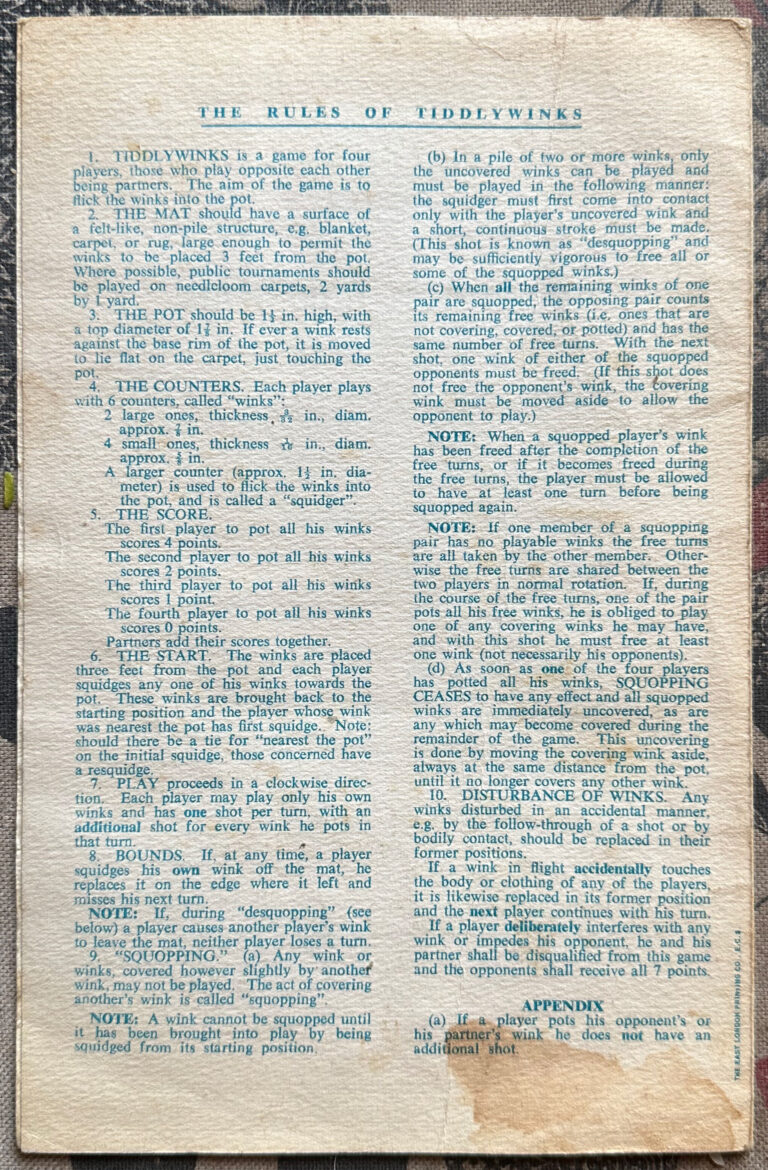THE RULES OF TIDDLYWINKS
1. TIDDLYWINKS is a game for four players, those who play opposite each other being partners. The aim of the game is to flick the winks into the pot.
2. THE MAT should have a surface of a felt-like, non-pile structure, e.g. blanket, carpet, or rug, large enough to permit the winks to be placed 3 feet from the pot. Where possible, public tournaments should be played on needleloom carpets, 2 yards by 1 yard.
3. THE POT should be 1½ in. high, with a top diameter of 1⅞ in. If ever a wink rests against the base rim of the pot, it is moved to lie flat on the carpet, just touching the pot.
4. THE COUNTERS. Each player plays with 6 counters, called “winks”:
- 2 large ones, thickness, 3/32 in., diam. approx. ⅞ in.
- 4 small ones, thickness 1/16 in., diam. approx. ⅝ in.
- A larger counter (approx. 1½ in. diameter) is used to flick the winks into the pot, and is called a “squidger”.
- The first player to pot all his winks scores 4 points
- The second player to pot all his winks scores 2 points.
- The third player to pot all his winks scores 1 point.
- The fourth player to pot all his winks scores 0 points.
- Partners add their scores together.
